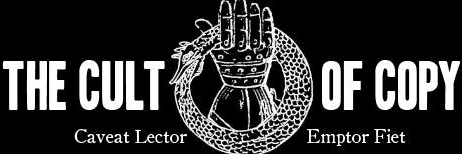“In journalism just one fact that is false prejudices the entire work. In contrast, in fiction one single fact that is true gives legitimacy to the entire work. That's the only difference, and it lies in the commitment of the writer. A novelist can do anything he wants so long as he makes people believe in it.” – Gabriel Garcia Marquez, Born Mar. 6, 1927.
Persuasive writing isn't about fact. It's about truth.
If you think truth and facts are the same thing, you're going to suck at writing persuasively.
Emotions are true. Feelings are real. But they can defy logic and sense. Yet they are urgent and influential and can override all thinking and drive action.
Are emotions facts? Sort of. They are true chemical responses, but if one event makes you feel sad, while it makes me laugh – which response is “true”? Neither? Both? Yes.
The point is, persuasive writers deal in TRUTH. What FEELS real and right and correct. Based on our experiences and memories and knowledge.
You are not relaying information. You are agitating and guiding an emotional experience. Just like a shaman or a screenwriter in cahoots with a director.
What are you showing them? How are they supposed to feel about it? Facts are fine. Necessary even, from a legal standpoint. But we aren't journalists. We are much closer to fiction writers.
We are story creators. We begin with a very small fact and artfully arrange a plot – a plot that will queue and trigger the emotions we want the audience to feel.
Here is a trick about emotions. Emotions are REAL even if the story that triggers them is not. A sad story makes you feel sad, even if it's not happening to you. We have a sympathetic response, but the feeling is REAL.
So things like envy, desire, hope, anger, loathing, fear, doubt, confidence, pride, shame, despair, ennui, lust, jealousy, joy, love, heartbreak, etc…
Those are your palette. Not facts. Not numbers. Not proof. Not headlines or testimonials or guarantees or promises. Those are tools. Words are tools to create the ACTUAL material we work with. Which is emotion. Which is truth.
Because feelings are WHY people do things. Not facts. Facts help back up those feelings once they've been felt and decided upon. Feelings first. Then facts.
That's how you build the beliefs that make people buy and behave how you want them to.


And the easiest, quickest way to do it, is targeted stories. Delivered via emails.
There is a small window of post-story-fog where reader is in a emotional haze, reeling from experience, this – is the golden door to slip your product.
For, this will close-like sesame, once life pulls the reader back to its ugly existence.
Use it